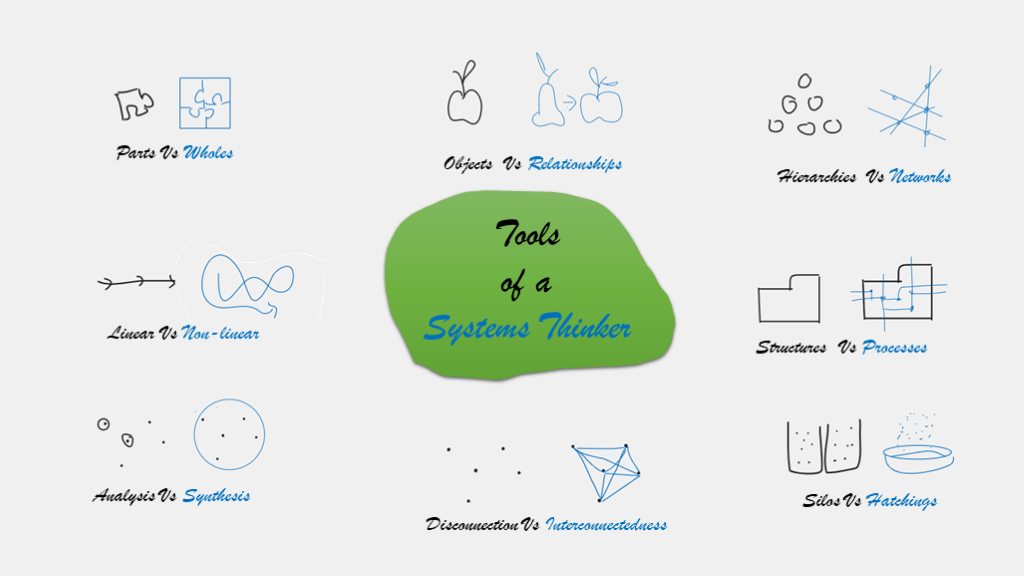There is a Chinese proverb that says, “The slight flapping of a butterfly’s wings can be felt on the other side of the world” and this served the mathematician and meteorologist Edward Lorenz as the basis for his Chaos Theory in which, without going into detail, he explains that small variations in the conditions of a system can imply large differences in future behavior, making short-term prediction impossible.
We recently talked about how the result of actions is not manifested at an individual level, but is a set of interactions between different contexts and actors.
And the fact is that we do not live in isolation, everything is interconnected in a system, the decisions we make affect more people in one way or another and sometimes with unexpected results. An example of this is the case of the Borneo cats.
I also remember something that happened at my sisters’ school. The school opened at 8:45 am, and until then, you had to wait outside. Parents would take their daughters to school a little earlier, around 8:30 or so, and stand outside waiting. The school preferred to open the doors for these people to come in and get cold. The result was that more parents brought their daughters in earlier because the school “now opened at 8:30”. To avoid this trickle of people coming early, it was proposed that there should be a small fee for those arriving early, and thus hopefully discourage them from coming early to drop off their daughters. The result was again the opposite, more parents were bringing their daughters earlier, because by paying, they no longer felt bad about leaving them at the school to be looked after, indeed, it was requested that the starting time be brought forward to 8:00.
In the same way, in companies we may think that an idea is very good and is implemented with the best of intentions, but it ends up being a disaster because of the collateral implications it brings with it.
For example, in a company where the office manager saw that people were spending a lot of time drinking coffee instead of working and thought it was because the coffee was too hot and they were waiting for it to cool down sitting in armchairs around the coffee machine and groups of people were forming and chatting. It was decided to ask the vending machine owners to make the coffee less hot and remove the armchairs, in the hope that they would return to their jobs sooner. The result was catastrophic. The employees began to complain about the coffee and opted to go down to the street to drink it in the bars, with the result that the time invested was now greater, but not only that, but now, as each group went to a different bar, there was no longer the informal communication that existed around the coffee machine, where they discussed issues and shared information that was very valuable for the company. Currently, they have an entire room for coffee.

These are just a few examples of how a decision affects in many ways and surely the reader will have more coming to mind.
To understand this complex behavior, instead of dividing it into parts and analyzing them in isolation, we can look at it in terms of sets and relationships between them, and Systems Thinking helps us to do this.
According to systems thinking, the behavior of the overall system is the result of the effects obtained from the reinforcement and balancing processes that occur between each of the components. The reinforcement process involves the increase of some component of the system. If the reinforcement is not controlled by a balancing process, it ends up causing collapse due to both excesses and defects. A balancing process is one that tends to maintain equilibrium in a particular system. To be very simplistic, we all know Coca-Cola, but Coca-Cola is advertised as a reinforcement to prevent us from forgetting it, in other words to avoid collapse. If they broadcast ads every minute, we would think they are too annoying and possibly we would also stop buying, stop broadcasting ads is the process of equilibrium.
Thus, we can also see the Deming cycles (Plan, Do, Check and Act), as a reinforcement and balance of our processes that prevent the quality of their results from degrading and collapsing.
When we talk about the management of organizations, many see systems thinking as an effective way of approach, as it considers the way in which different complex entities interact and influence each other, so that between them they make up the system as a whole. The different divisions, areas and teams in an organization connect and affect each other, and they should ideally work together to achieve a common overall goal rather than local goals. Often local maximums do not imply a global maximum. Business leaders who are systems thinkers see “the big picture,” and that is what they focus on to maximize performance within the organization.
There are many books and tools for working with Systems Thinking, design archetypes, simulation tools etc. A website that contains a lot of information on this topic is https://thesystemsthinker.com/ where you can find, among other things, tools, use cases and articles.
Because when something changes everything changes, welcome to systems thinking.
Nice topic. I recommend you this link, with a lot of information on the matter.
https://www.systems-thinking.org/
Thank you